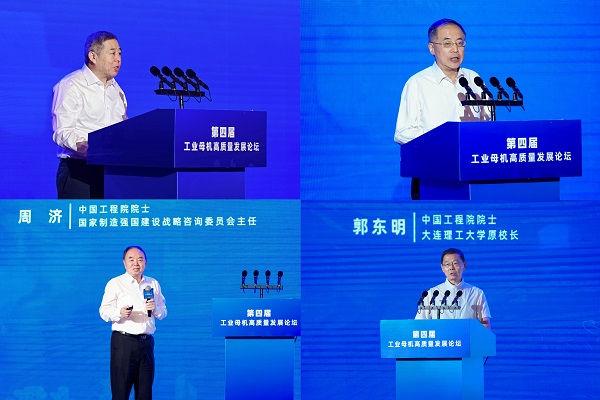VIVADO IP核之FIR抽取器多相滤波仿真(含有与MATLAB仿真数据的对比)
目录
前言
一、滤波器系数生成
二、用MATLAB生成仿真数据
三、VIVADO FIR抽取多相滤波器使用
四、VIVADO FIR抽取多相滤波器仿真
五、VIVADO工程下载
总结
前言
关于FIR低通滤波器和多相滤波插值器的使用,我之前的文章已经介绍过了,本文将继续深入介绍FIR抽取器多相滤波的使用方法,并将FIR抽取多相滤波的结果与MATLAB仿真计算的结果比较,验证了FIR抽取器多相滤波使用正确。
提示:以下是本篇文章正文内容,欢迎各位阅读,转载请附上链接。
一、滤波器系数生成
仿真假设有一个信号由两个正弦波叠加而成,分别是幅值为1,频率为5MHz,初相为0的正弦波和幅值为1,频率为15MHz,初相为0的正弦波。用120MHz的采样率对其进行采样,那么可以得到一个信号速率为120MSPS,包含频率为5MHz和15MHz正弦波的信号,接下来我们分别用MATLAB和FIR ip核对其进行4抽取多相滤波,滤波器的通带截止频率为10MHz,那么便可以得到一个信号速率为30MSPS,频率为5MHz的正弦波。
滤波器设计如下,抽取之前速率为120M,所以这里滤波器的采样频率是120MHz,而不是30MHz。设计的滤波器为51阶,那么有52个系数,便于4抽取多相滤波。

关于滤波器系数的量化成16bit以及生成coe文件可以参考我的另外一篇博客VIVADO IP核之FIR低通滤波仿真(含滤波器群延时仿真)_vivado fir滤波器-CSDN博客,里面有详细的介绍,本文就不再赘述。
二、用MATLAB生成仿真数据
运行以下代码即可生成vivado仿真所需要的仿真数据data_decimation.txt。
rng default;
clc;
clear;
close all;
fs = 120e6; % 采样频率 120MHz
K = 1024; % 快拍个数
t = 0:1/fs:(K-1)/fs;
f1 = 5e6;
f2 = 15e6;
x = cos(2*pi*f1*t) + cos(2*pi*f2*t);
h = fopen('data_decimation.txt','w');
for i=1:length(x)
result= fi(x(i), 1, 16, 9).bin;
fprintf(h,'%s\n',result);
end
fclose(h);
figure(1);
plot(x(1:60));
grid on;
figure(2);
signal_frequencyspectrum(x,fs);
grid on;
ylim([-90 0]);
lowpass_Fs=fs; % 低通滤波器的采样频率
lowpass_Fpass=10000000; % 低通滤波器的通带截止频率
lowpass_Fstop=14000000; % 低通滤波器的阻带起始频率
% 下一行的lowpass是用fdatool设计的滤波器保存为matlab code自己修改了一下
[lowpass_b,lowpass_a] = tf(lowpass(lowpass_Fs,lowpass_Fpass,lowpass_Fstop));% 得到滤波器系数
y=conv(x,lowpass_b);
x_MLPF=y(2:4:end);
% lowpass_b1=lowpass_b(1:4:end);
% lowpass_b2=lowpass_b(2:4:end);
% lowpass_b3=lowpass_b(3:4:end);
% lowpass_b4=lowpass_b(4:4:end);
%
% x1=x(1:4:end);
% x=[0 x];
% x2=x(1:4:end);
% x=[0 x];
% x3=x(1:4:end);
% x=[0 x];
% x4=x(1:4:end);
%
%
% x_MLPF1=conv(x1,lowpass_b1);
% x_MLPF2=conv(x2,lowpass_b2);
% x_MLPF3=conv(x3,lowpass_b3);
% x_MLPF4=conv(x4,lowpass_b4);
%
% x_MLPF=[x_MLPF1 0]+x_MLPF2+x_MLPF3+x_MLPF4;
figure(3);
plot(x_MLPF(1:60));
grid on;
figure(4);
signal_frequencyspectrum(x_MLPF(ceil((length(lowpass_b)-1)/2)+1:end-floor((length(lowpass_b)-1)/2)),fs/4);
grid on;
ylim([-90 0]);
function Hd = lowpass(lowpass_Fs,lowpass_Fpass,lowpass_Fstop)
%LPF 返回离散时间滤波器对象。
% MATLAB Code
% Generated by MATLAB(R) 23.2 and Signal Processing Toolbox 23.2.
% Generated on: 02-Aug-2024 20:04:40
% Equiripple Lowpass filter designed using the FIRPM function.
% All frequency values are in Hz.
Fs = lowpass_Fs; % Sampling Frequency
Fpass = lowpass_Fpass; % Passband Frequency
Fstop = lowpass_Fstop; % Stopband Frequency
Dpass = 0.057501127785; % Passband Ripple
Dstop = 0.0031622776602; % Stopband Attenuation
dens = 20; % Density Factor
% Calculate the order from the parameters using FIRPMORD.
[N, Fo, Ao, W] = firpmord([Fpass, Fstop]/(Fs/2), [1 0], [Dpass, Dstop]);
% Calculate the coefficients using the FIRPM function.
b = firpm(N, Fo, Ao, W, {dens});
Hd = dfilt.dffir(b);
% [EOF]
MATLAB原始信号如下图所示:


低通滤波4抽取后的信号为(可见FIR滤波器有群延时):


三、VIVADO FIR抽取多相滤波器使用
在vivado中搜索FIR滤波器IP核并点进去设置它。滤波器命名为FIR_polyphase_LPF,导入第一步MATLAB生成的滤波器系数文件。Filter type 选择抽取,抽取因子设置为4。

输入信号采样速率设置为120MHz,时钟频率设置为120MHz,这样抽取前每个输入持续1个时钟周期,4抽取后就变成了每4个时钟出1个数据。

滤波器系数设置为16位有符号数,输入数据也为16位有符号数,输入数据的小数位数设置为9,这是因为第二步中MATLAB量化的输入数据含有9位小数。然后点击左边的Freq.Response就能看见滤波器的幅度响应。

滤波抽取调用FIR多相抽取滤波比我们先调用FIR低通滤波后再抽取节约资源的多。
四、VIVADO FIR抽取多相滤波器仿真
在工程中建立一个名为FIR_polyphase_LPF_test的tb.v文件。其中$readmemb("data_decimation.txt", signal)用于从文本中读取二进制数据赋值给signal。
`timescale 1ns / 1ps
//
// Company:
// Engineer:
//
// Create Date: 2024/08/06 15:36:14
// Design Name:
// Module Name: FIR_polyphase_LPF_test
// Project Name:
// Target Devices:
// Tool Versions:
// Description:
//
// Dependencies:
//
// Revision:
// Revision 0.01 - File Created
// Additional Comments:
//
//
module FIR_polyphase_LPF_test();
reg clk=1;
parameter PERIOD=2;
initial
begin
forever #(PERIOD/2) clk=~clk;
end
reg s_axis_data_tvalid=0;
wire s_axis_data_tready;
reg [15:0] s_axis_data_tdata=0;
wire m_axis_data_tvalid;
wire [39:0] m_axis_data_tdata;
integer i=0;
reg [15:0] signal[1023:0];
initial
begin
$readmemb("data_decimation.txt", signal);//从data.txt中读入采样数据
#(PERIOD*5)
forever
begin
@(negedge clk)
begin
if(i<1024)
begin
s_axis_data_tvalid<=1;
s_axis_data_tdata <= signal[i];
i <= i + 1;
end
else
begin
s_axis_data_tvalid<=0;
s_axis_data_tdata <=0;
end
end
end
end
integer dout_file;
initial
begin
dout_file=$fopen("E:/play_vivado/FIR_polyphase_decimation_test/Readme/m_axis_data_tdata.txt"); //打开所创建的文件,修改为自己想存储的位置
if(dout_file == 0)
begin
$display ("can not open the file!"); //创建文件失败,显示can not open the file!
$stop;
end
end
initial
begin
forever
begin
@(posedge clk)
begin
if(m_axis_data_tvalid)
$fdisplay(dout_file,"%d",$signed(m_axis_data_tdata)); //保存有符号数据
end
end
end
FIR_polyphase_LPF u_FIR_polyphase_LPF (
.aclk(clk), // input wire aclk
.s_axis_data_tvalid(s_axis_data_tvalid), // input wire s_axis_data_tvalid
.s_axis_data_tready(s_axis_data_tready), // output wire s_axis_data_tready
.s_axis_data_tdata(s_axis_data_tdata), // input wire [15 : 0] s_axis_data_tdata
.m_axis_data_tvalid(m_axis_data_tvalid), // output wire m_axis_data_tvalid
.m_axis_data_tdata(m_axis_data_tdata) // output wire [39 : 0] m_axis_data_tdata
);
endmodule
接下来将第二步生成的仿真数据保存到...\FIR_polyphase_decimation_test\FIR_polyphase_decimation_test.sim\sim_1\behav\xsim文件夹下:

然后点击run simulation。将s_axis_data_tdata的数据格式设置为定点有符号数,小数位数为9位。将m_axis_data_tdata_real的数据格式设置为定点有符号数,小数位数为26位。然后就能看见输入的数据依次为2.0,1.6738,0.8652...,和MATLAB生成的信号数据是对的上的。滤波后的数据依次为0.0116,-0.0245,-0.0466,...,和MATLAB滤波后的信号数据也是对的上的。




这里注意一下FIR 抽取多相滤波IP核是从第二个数据开始抽取的。

将输入输出设置为波形显示如下:

可知FIR 抽取多相滤波IP核既完成了滤波,又完成了抽取操作,抽取后是每4个clk出一个数据。
五、VIVADO工程下载
https://download.csdn.net/download/m0_66360845/89797080![]() https://download.csdn.net/download/m0_66360845/89797080
https://download.csdn.net/download/m0_66360845/89797080
总结
本文讲解了VIVADO中FIR抽取多相滤波器IP核的使用,通过仿真,与MATLAB计算的数据相比较,验证了VIVADO中FIR抽取多相滤波器本身是没有考虑滤波器的群延时的,以上的仿真结果很好的说明了如何使用VIIVADO FIR抽取多相滤波器。


![[数据库实验七]事务设计](https://i-blog.csdnimg.cn/direct/687e9b3965104b36a1d7d735528a8d5f.png)















